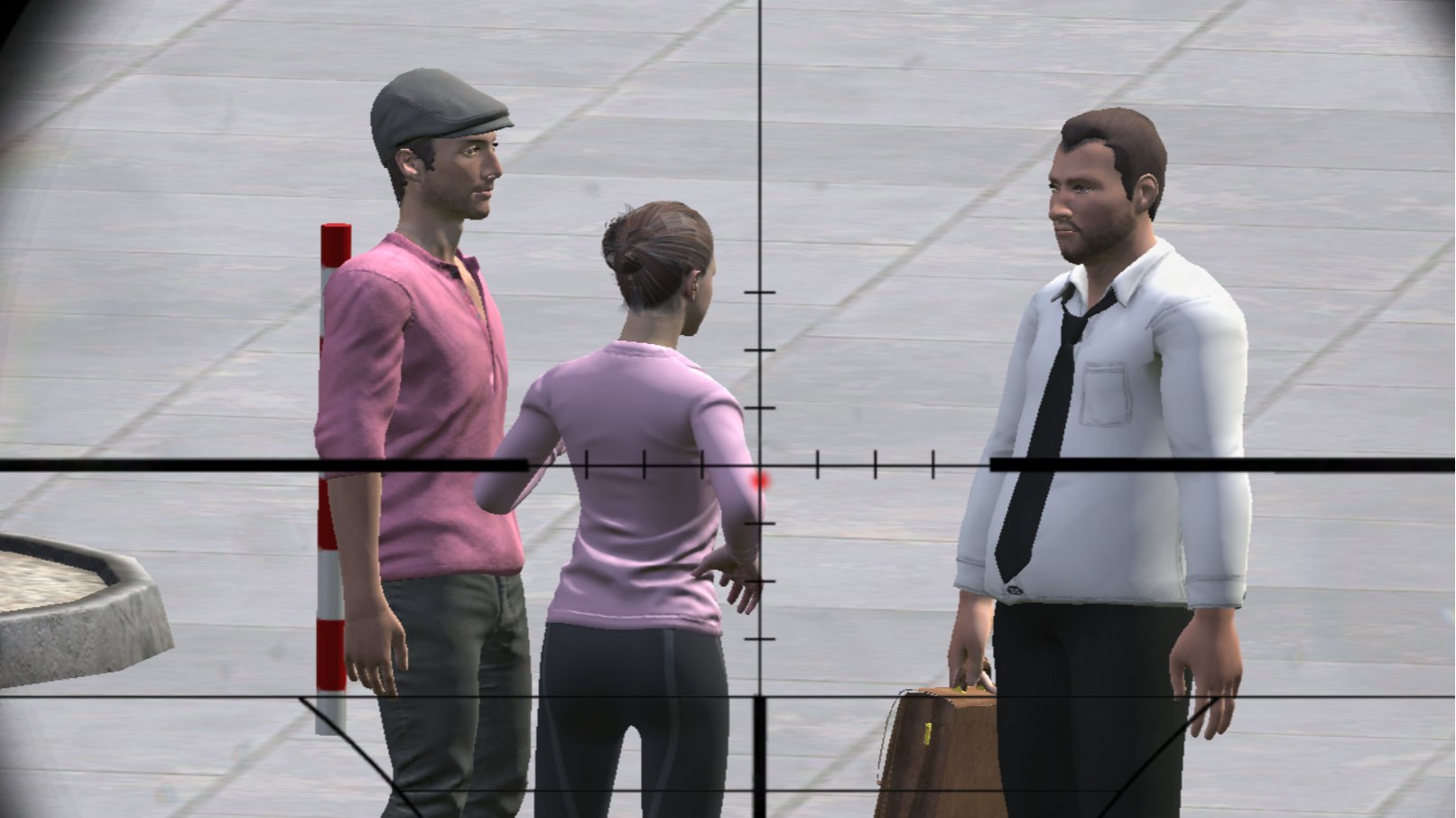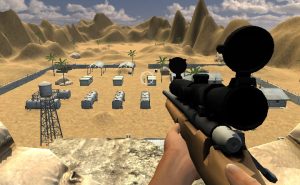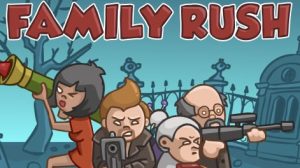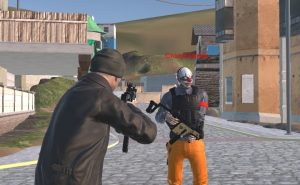
17534

The Homicidal Liu - Into Damnation: A Nightmarish Survival Horror Masterpiece
Introduction to The Homicidal Liu - Into Damnation
The Homicidal Liu - Into Damnation stands as Poison Games' most intense survival horror creation, pushing players into a relentless battle against an unstoppable supernatural antagonist. This sequel to the cult-classic Jeff the Killer game escalates tension through advanced AI behaviors, atmospheric level design, and heart-pounding chase sequences. The Homicidal Liu - Into Damnation introduces Liu—a vengeful entity whose adaptive stalking mechanics make previous antagonists like Jeff appear predictable. Players must navigate labyrinthine environments while managing limited resources, solving environmental puzzles, and surviving Liu's ever-present threat. With its blend of psychological horror and tactical combat, The Homicidal Liu - Into Damnation redefines browser-based horror gaming.
Core Gameplay Mechanics of The Homicidal Liu - Into Damnation
The Homicidal Liu - Into Damnation operates on a time-pressure system where Liu's aggression increases proportionally to player progress. Every action—from solving puzzles to firing weapons—generates noise that attracts the homicidal entity. The game features three difficulty modes: Casual (limited Liu appearances), Nightmare (constant pursuit), and Damnation (permadeath). The Homicidal Liu - Into Damnation requires strategic route planning, as boarded windows and barricaded doors only delay Liu temporarily. Players collect journal pages detailing Liu's backstory while scavenging for ammo and first aid kits.
Liu's Adaptive AI System
What makes The Homicidal Liu - Into Damnation unique is Liu's learning algorithm. She remembers player hiding spots, frequently used escape routes, and weapon preferences. If players rely too heavily on shotguns, Liu begins wearing armored plating. The Homicidal Liu - Into Damnation's antagonist evolves across playthroughs, requiring constant strategy adjustments.
Weapons and Combat in The Homicidal Liu - Into Damnation
The Homicidal Liu - Into Damnation provides eight weapons ranging from melee tools to military-grade firearms: 1. Kitchen Knife (silent but risky) 2. Dual Pistols (balanced mobility/firepower) 3. Pump-Action Shotgun (close-quarters devastation) 4. Crossbow (reusable bolts) 5. Flamethrower (area denial) 6. Sniper Rifle (environmental weak point exploitation) 7. Chainsaw (high risk/reward) 8. Holy Water Grenades (story-locked anti-Liu tech). Each weapon in The Homicidal Liu - Into Damnation affects Liu's behavior—flames make her retreat temporarily, while headshots trigger enraged speed boosts.
Ammo Conservation Strategies
The Homicidal Liu - Into Damnation punishes reckless shooting through scarce ammunition reserves. Players must prioritize environmental kills—collapsing chandeliers, triggering gas leaks, or luring Liu into electrical traps. Headshots deal 3x damage but consume precious bullets, creating tense risk/reward calculations mid-chase.
Level Design and Environmental Storytelling
The Homicidal Liu - Into Damnation's campaign spans 12 intricately designed locations: abandoned hospitals, decaying mansions, and fog-shrouded forests. Each area contains multiple escape routes, secret passages, and interactive hazards. The Homicidal Liu - Into Damnation uses dynamic lighting to heighten tension—flashlights attract Liu but reveal hidden clues. Environmental puzzles range from simple lock combinations to multi-stage power grid reactivations under time pressure.
Signature Locations
• Bloodsoaked Ballroom: Features collapsing floors and chandelier ambush opportunities. • Liu's Lair: Final showdown environment with limited cover and environmental traps. • The Catacombs: Maze-like tunnels where players navigate using sound cues. The Homicidal Liu - Into Damnation's levels progressively remove safe spaces, mirroring Liu's growing dominance.
Graphics and Sound Design Excellence
The Homicidal Liu - Into Damnation utilizes WebGL to deliver console-quality visuals in browsers. Liu's character model features real-time damage accumulation—players witness bullet wounds, burn marks, and torn clothing persist across encounters. The game's sound design heightens immersion: directional audio cues warn of Liu's approach, while dynamic music intensifies during chase sequences. The Homicidal Liu - Into Damnation's visual signature lies in its grotesque art style, blending realistic textures with surreal nightmare imagery.
Psychological Horror Elements
The Homicidal Liu - Into Damnation employs sanity mechanics where prolonged exposure to Liu causes visual distortions and false audio cues. At maximum stress levels, players temporarily see duplicate Lius or hear phantom footsteps. These effects make The Homicidal Liu - Into Damnation particularly punishing in extended play sessions.
Advanced Survival Tactics
Mastering The Homicidal Liu - Into Damnation requires exploiting the environment: 1. Bait Liu into flammable barrels then ignite with pistol shots 2. Shoot padlocked doors to create instant barricades 3. Use mirrors to check corridors without exposing yourself 4. Combine noise-makers with proximity explosives 5. Memorize medkit spawn rotations. The Homicidal Liu - Into Damnation's speedrun community has developed frame-perfect tricks like "window vaulting" to outpace Liu.
Speedrun Challenges
The Homicidal Liu - Into Damnation supports competitive playthroughs with in-game timers and leaderboards. Top players complete Damnation mode in under 40 minutes using glitchless routes. Community challenges include knife-only runs and maximum insanity completions.
Comparison to Similar Horror Titles
While sharing DNA with Slendrina Must Die and Granny, The Homicidal Liu - Into Damnation distinguishes itself through combat depth and narrative integration. Unlike static antagonists, Liu's evolving tactics require adaptive thinking. The weapon customization system surpasses typical horror game offerings, positioning The Homicidal Liu - Into Damnation as a hybrid of survival horror and tactical shooter.
Poison Games' Design Evolution
The Homicidal Liu - Into Damnation showcases Poison Games' maturation from jump-scare focused titles to complex psychological experiences. Environmental interactivity has increased 300% compared to Jeff the Killer, while enemy AI routines utilize machine learning principles.
Community and Modding Support
The Homicidal Liu - Into Damnation boasts an active Discord community sharing custom challenges, lore theories, and modding tools. Player-created content includes alternative enemy skins, randomized item layouts, and fan-made story expansions. The Homicidal Liu - Into Damnation's developers regularly feature top mods in official updates.
Upcoming Content Roadmap
Poison Games has announced two DLC packs for The Homicidal Liu - Into Damnation: 1. "Ashes of the Past" adding co-op survival mode 2. "Eternal Damnation" introducing roguelike elements with procedurally generated levels. These expansions will further cement The Homicidal Liu - Into Damnation's position as a browser horror benchmark.
Why The Homicidal Liu - Into Damnation Stands Out
The Homicidal Liu - Into Damnation succeeds by balancing accessibility with depth—its browser-based platform lowers entry barriers, while hardcore mechanics satisfy veteran horror fans. The seamless integration of combat, puzzle-solving, and narrative creates an unmatched sense of progression. As Liu's legend grows through player deaths and narrow escapes, The Homicidal Liu - Into Damnation etches itself into horror gaming history.
Accessibility Features
The Homicidal Liu - Into Damnation includes colorblind modes, adjustable FOV, and customizable scare intensity settings. These options ensure the game remains approachable while preserving its core horror identity—a testament to Poison Games' player-first design philosophy.








